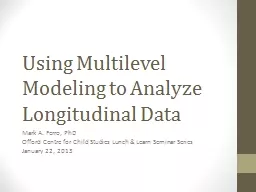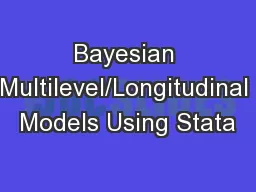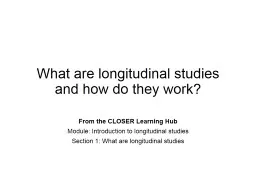PPT-Using Multilevel Modeling to Analyze Longitudinal Data
Author : min-jolicoeur | Published Date : 2018-11-04
Mark A Ferro PhD Offord Centre for Child Studies Lunch amp Learn Seminar Series January 22 2013 Recommended Readings Singer JD Willett JB Applied longitudinal data
Presentation Embed Code
Download Presentation
Download Presentation The PPT/PDF document "Using Multilevel Modeling to Analyze Lon..." is the property of its rightful owner. Permission is granted to download and print the materials on this website for personal, non-commercial use only, and to display it on your personal computer provided you do not modify the materials and that you retain all copyright notices contained in the materials. By downloading content from our website, you accept the terms of this agreement.
Using Multilevel Modeling to Analyze Longitudinal Data: Transcript
Download Rules Of Document
"Using Multilevel Modeling to Analyze Longitudinal Data"The content belongs to its owner. You may download and print it for personal use, without modification, and keep all copyright notices. By downloading, you agree to these terms.
Related Documents














